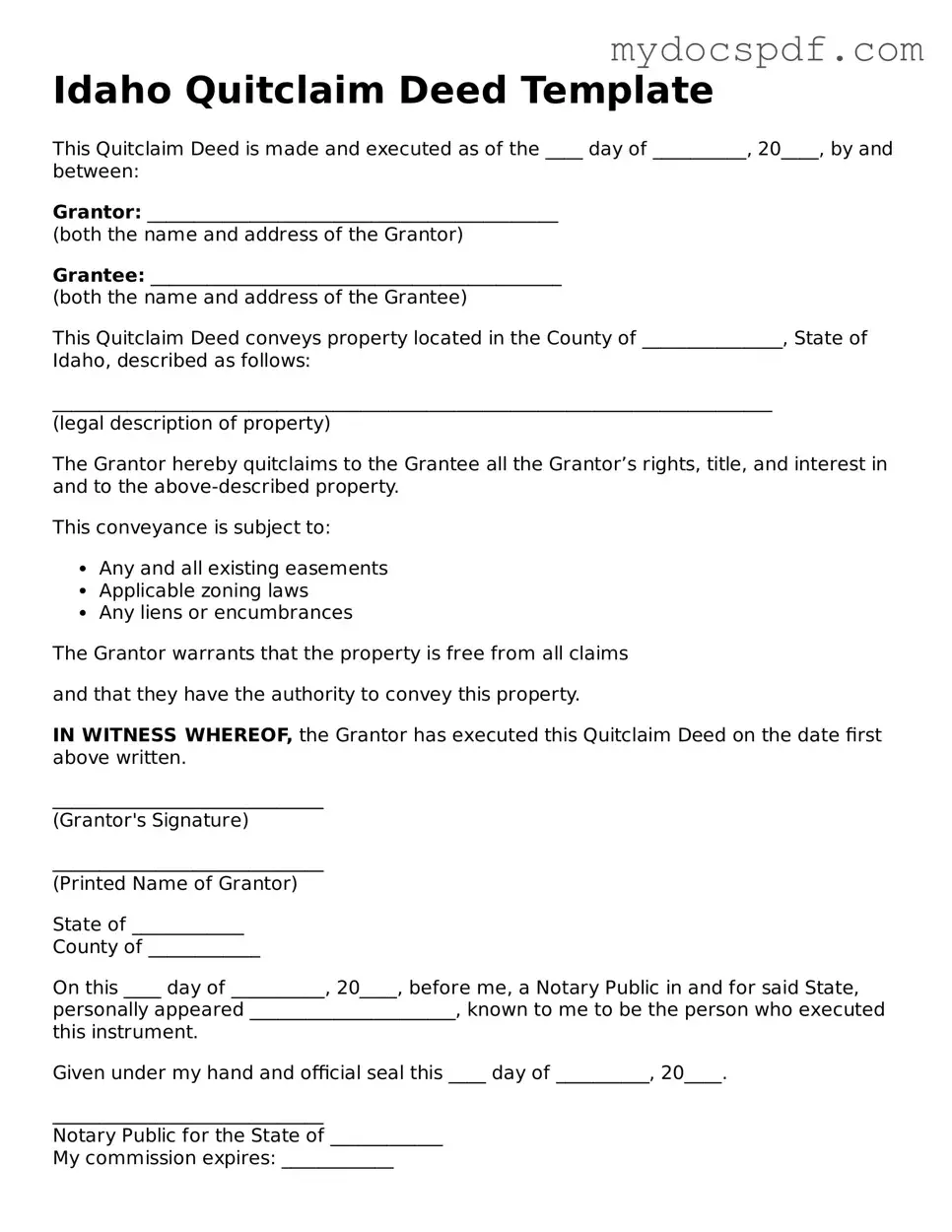Idaho Quitclaim Deed Template
This Quitclaim Deed is made and executed as of the ____ day of __________, 20____, by and between:
Grantor: ____________________________________________
(both the name and address of the Grantor)
Grantee: ____________________________________________
(both the name and address of the Grantee)
This Quitclaim Deed conveys property located in the County of _______________, State of Idaho, described as follows:
_____________________________________________________________________________
(legal description of property)
The Grantor hereby quitclaims to the Grantee all the Grantor’s rights, title, and interest in and to the above-described property.
This conveyance is subject to:
- Any and all existing easements
- Applicable zoning laws
- Any liens or encumbrances
The Grantor warrants that the property is free from all claims
and that they have the authority to convey this property.
IN WITNESS WHEREOF, the Grantor has executed this Quitclaim Deed on the date first above written.
_____________________________
(Grantor's Signature)
_____________________________
(Printed Name of Grantor)
State of ____________
County of ____________
On this ____ day of __________, 20____, before me, a Notary Public in and for said State, personally appeared ______________________, known to me to be the person who executed this instrument.
Given under my hand and official seal this ____ day of __________, 20____.
_____________________________
Notary Public for the State of ____________
My commission expires: ____________
